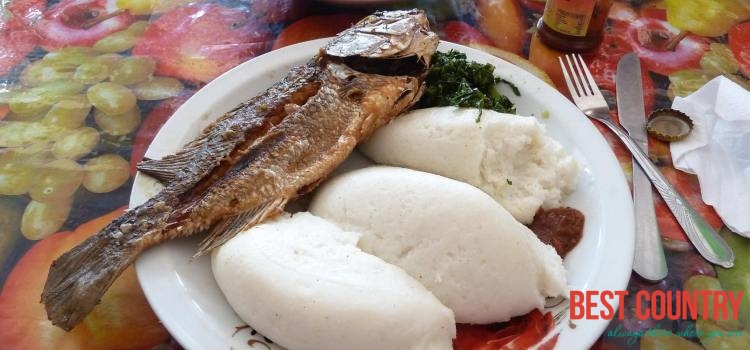Malawi is a heavily agricultural society. For this reason, most of the produce is locally grown, and imported food are considered a luxury.
Malawian Cuisine
 Just as the Americans have mashed potatoes and the Indians need rice at each meal, the Malawians have nsima to go along with their dishes.
Just as the Americans have mashed potatoes and the Indians need rice at each meal, the Malawians have nsima to go along with their dishes.
Nsima
Nsima is a type of porridge made from maize, shredded into kernels, and then rolled into balls or flattened into patties.
In meals, nsima is often dipped into a tomato and onion relish before being eaten. Those who can afford more expensive side dishes eat nsima with beef, chicken, or fried fish.
Other food items that go well with the maize porridge include beans, pumpkin leaves – in truth, practically whatever else you can find that is edible.
Nsima is so essential to the Malawian diet that it is the country’s national dish. Nsima with relishes costs only a dollar in restaurants.
Ntotchi
Ntotchi is a kind of bread that is popular in the northern regions of Malawi. The bread is made from mashed bananas, sugar, flour, eggs, milk, and baking powder. It is baked in a loaf pan for an hour and then served after the bread has cooled.
Little difference in taste and texture has been noted between ntotchi and the regular banana breads available in the supermarket.
Ntotchi is a favorite dish in Malawi. It is often served as dessert during special occasions.
Mbatata
Malawians are not well known for their snacks and desserts, but when they do bake pastries, their products are always nutritious and easy to make.
One example is the mbatata cookies. The cookies are made from sweet potatoes, margarine, milk, and sugar. Sometimes, cinnamon is added for extra flavor.
To make mbatata, the sweet potatoes are boiled and mashed with a spoon before mixing in the other ingredients. The mixture is then kneaded until it transforms into a thick dough.
The dough is cut into small pieces and then baked in an oven for 15 minutes. After the pale orange cookies have cooled, sugar and cinnamon are sprinkled on top. The cookies are then served as snacks.
Dziwala
A lot of us might consider insects yucky, but if you think about it, a lot of them are really not so different from shrimps – they have no bones inside, they have hard external coverings, and they have a lot of legs.
So if we love shrimps, what stops us from eating grasshoppers?
In Malawi, they don’t let labels such as “shrimp” and “grasshopper” get in the way of enjoying these protein-rich many-legged creatures. They take the hoppers without any second thoughts, fry them up, and call the dish dziwala.
The dish is especially popular during the late dry season, when large grasshoppers are abundant.
The insects, once caught, are prepared by having their wings and legs are removed, then whatever is left is boiled for 5 minutes then left to dry under the sun.
After that, the grasshoppers are fried in a pan with a little salt and fat. Minced onions and tomatoes are sprinkled for garnishing.
The finished product has a slightly sour, grassy taste, a sure sign of healthy food – which will go very well with a bottle of Carlsberg beer (which, by the way, is sold very cheaply in Malawi).